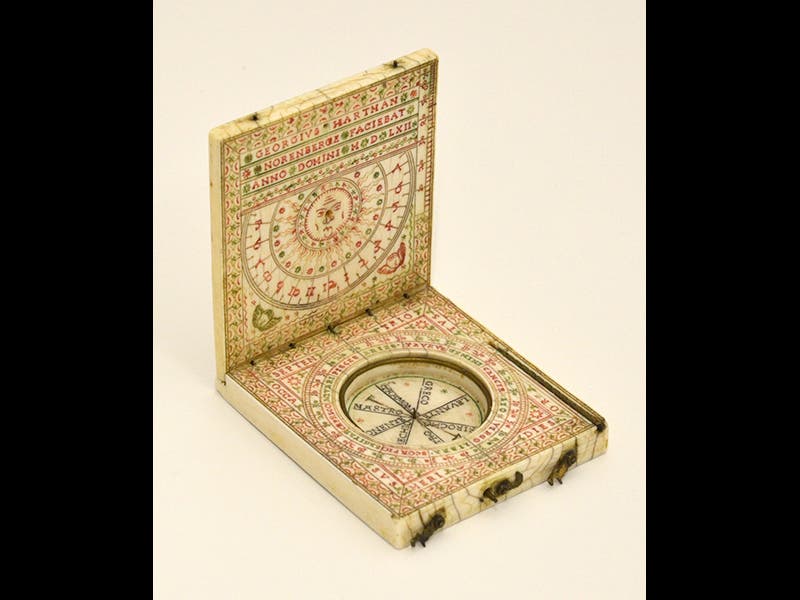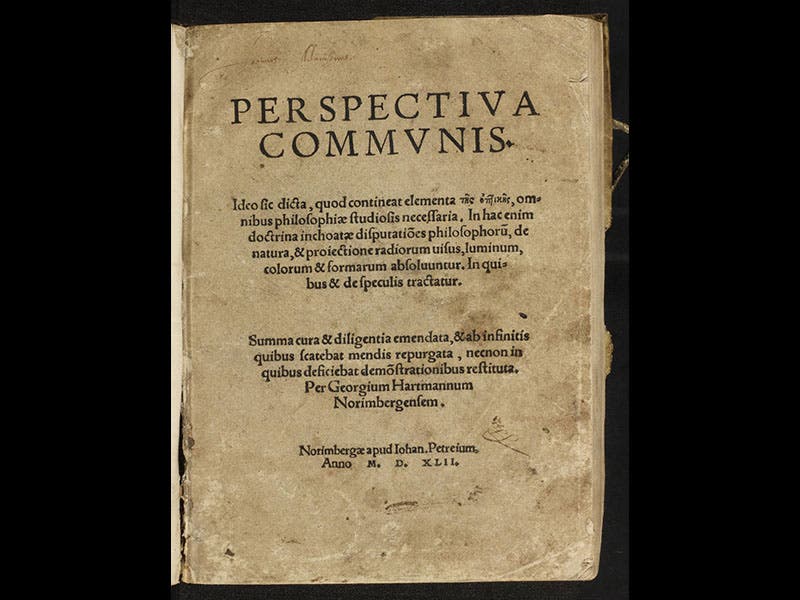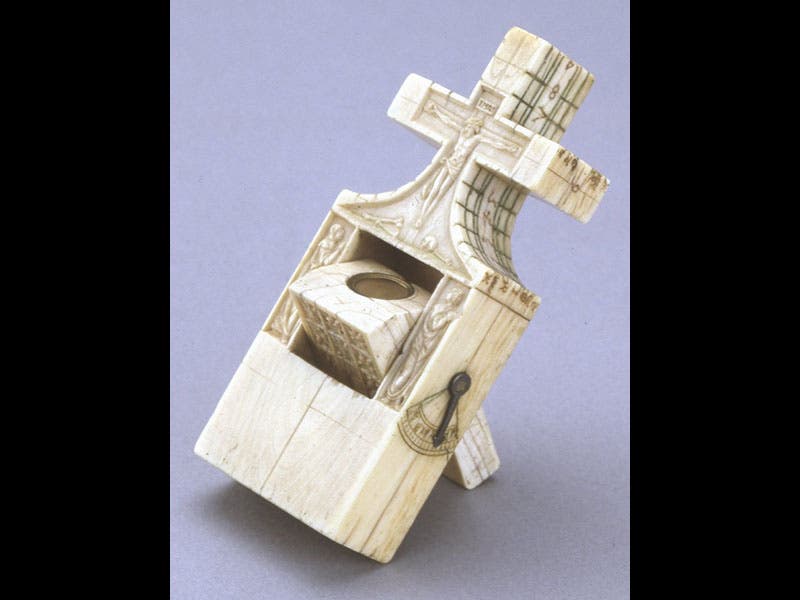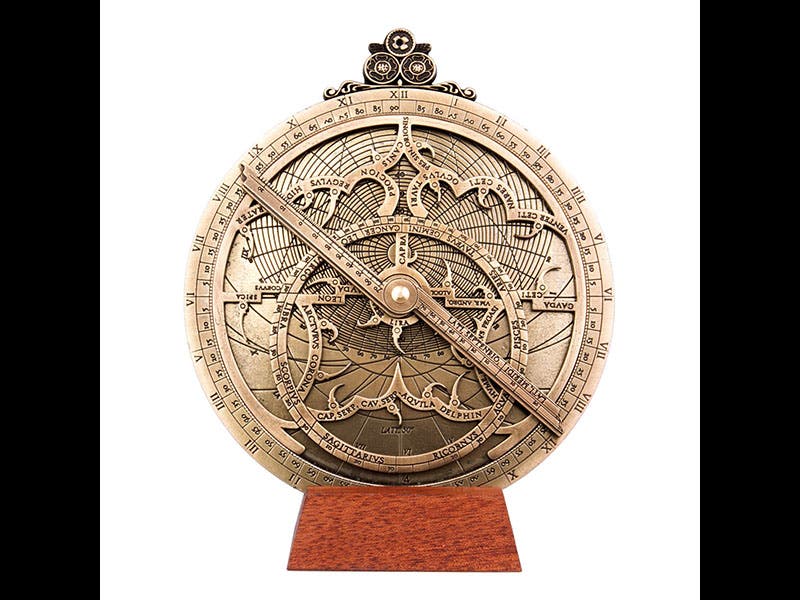Scientist of the Day - Georg Hartmann
Georg Hartmann, a German instrument maker, was born in Bavaria on Feb. 9, 1489. After a variety of studies and travels, he settled in Nuremberg in 1518. There he established a career and reputation as a consummate technician, producing astrolabes, sundials, and globes. Quite a number of his instruments survive, including an astrolabe in the Peabody Museum at Yale (first image) and a folding ivory dial with compass at the Oxford Museum of the History of Science (second image). Unlike many instrument makers, Hartmann was university educated, so he took a break from engraving brass to edit John Peckham's Perspectiva communis for publication. This optics manuscript had been written in the 1280s but did not see the light of print until Hartmann saw it through the press in 1542. The publisher of the book, Johannes Petreius, was at the time knee deep in page proofs for Copernicus’s De revolutionibus, which would come out the next year (1543), but he did a good job on Peckham’s Perspectiva (as he did with all his scientific texts), and we have a copy of the Hartmann/Petreius/Peckham work in our History of Science Collection (third image).
Hartmann's most remarkable career move was venturing into the field of paper instruments. Hartmann apparently reasoned that he could engrave an instrument dial for printing on paper and sell several hundred copies for about the same amount of effort that went into producing one instrument in brass, at the same time meeting the demand of those who could not afford hand-made custom instruments. He printed up at least 110 such paper instruments--we know this, because an album of 110 Hartman printed instruments survives in the Bavarian State Library in Munich. Many of these were flat dials meant to be pasted onto wood, but others were three-dimensional, intended to be folded into shape, sometimes with wood forms, sometimes without. One of the most notable is a cruciform sundial, printed in 1529, of which a single uncut sheet survives in the German National Museum in Nuremberg. When properly cut, folded, and pasted, the result was a crucifix that doubled as a time-keeping instrument. And, of course, if you preferred to pay a thousand times as much, Hartmann would have been happy to sell you a fully-formed time-telling crucifix, such as the ivory version above that came from his workshop in 1541 (fourth image). And the British Museum would be happy to sell you a facsimile of a Hartmann astrolabe. It is actually a very handsome instrument, for a reproduction (fifth image).
Dr. William B. Ashworth, Jr., Consultant for the History of Science, Linda Hall Library and Associate Professor, Department of History, University of Missouri-Kansas City. Comments or corrections are welcome; please direct to ashworthw@umkc.edu.











